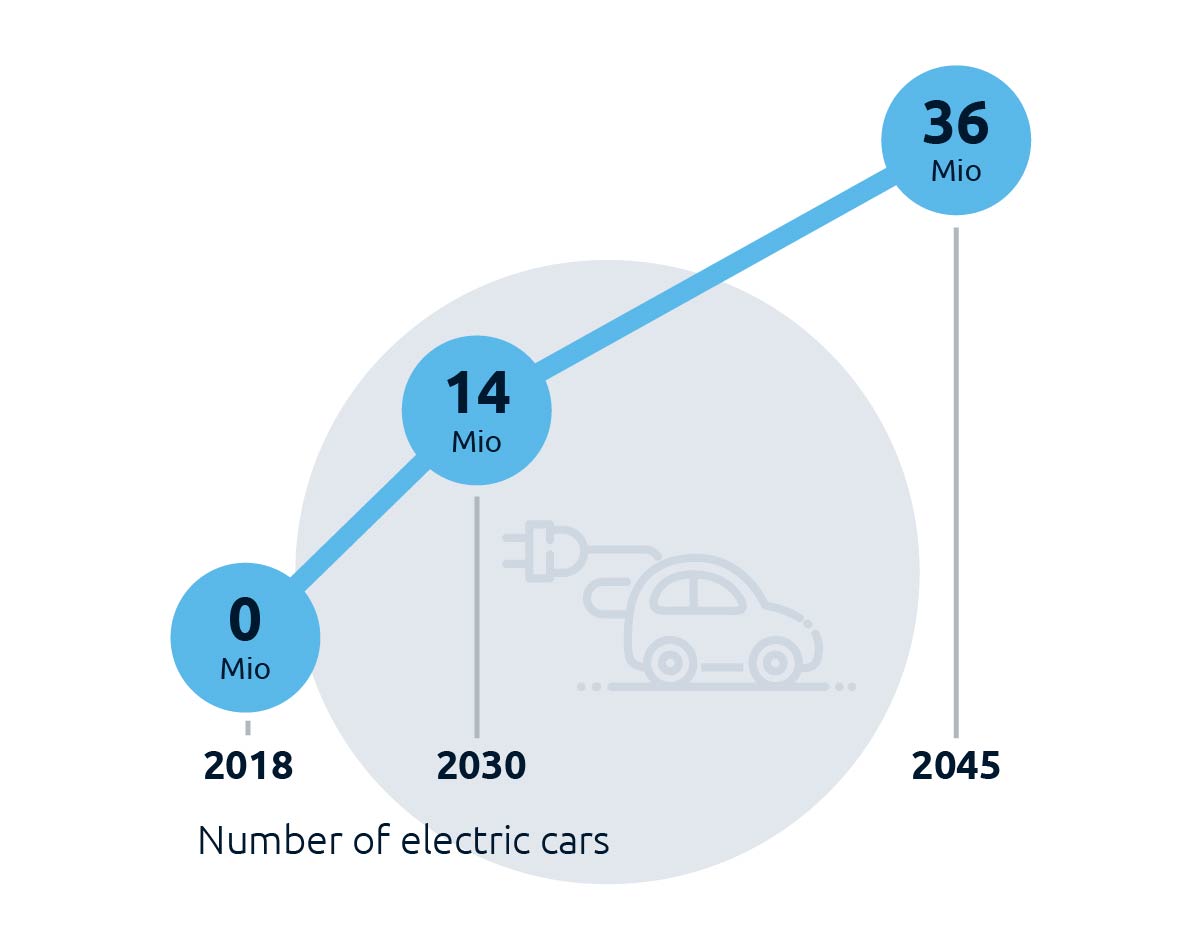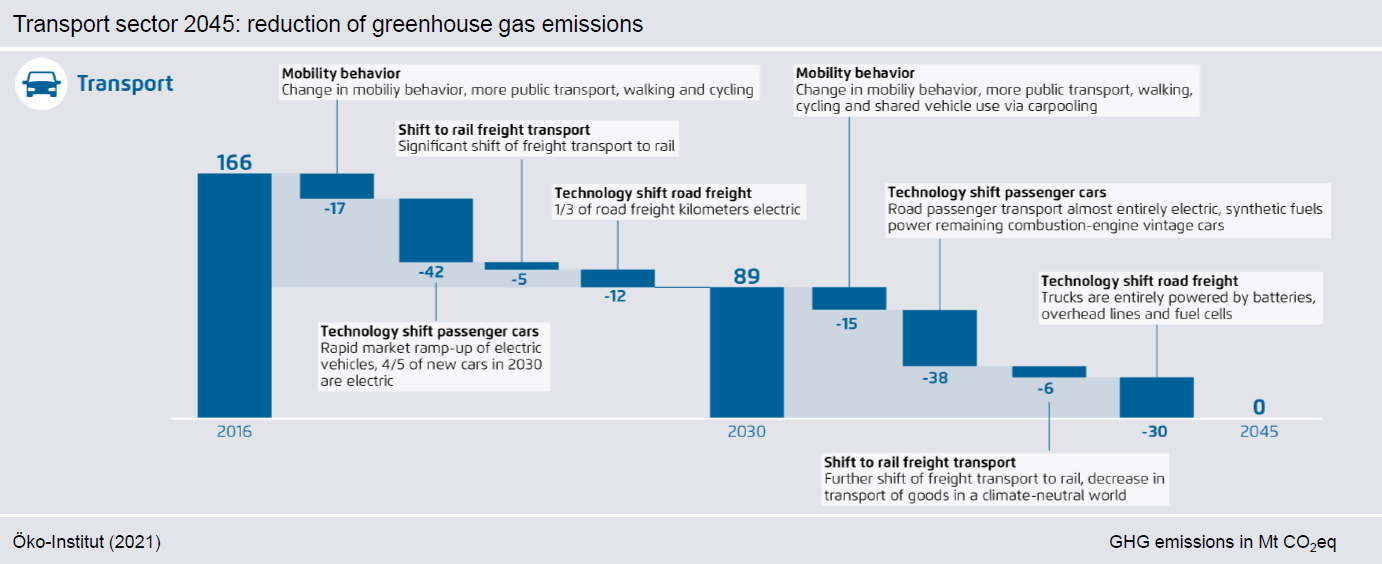Greenhouse gas emissions today are at the same level as in 1990
In the transport sector, the historical trend poses a particular challenge: In contrast to all other sectors, greenhouse gas emissions from the transport sector are now at the same level as in 1990. As passenger car and road freight traffic has increased sharply during this period, it has been possible to decouple traffic growth and greenhouse gas emissions. Nonetheless, transport is the only sector that has not yet made an absolute contribution to climate protection. Today, 93 percent of final energy demand is still based on fossil fuels.
Electromobility is at the heart of road passenger transport
Achieving climate neutrality requires that only zero-emission vehicles be on the roads in 2045. For reasons of efficiency and cost, battery electric vehicles are likely to prevail in the passenger car segment. We will need a complete switch to zero-emission vehicles with an interim target of 14 million electric cars on the road in 2030. New registrations of plug-in hybrid vehicles will expire by 2032 at the latest.
Freight transport, shipping and air transport are based on a technology mix
Technological development is currently less predictable in road freight transport than in passenger cars. As things stand at present, it can be assumed that there will be a technology mix in which around 2/3 of the mileage will be provided by electric trucks – with overhead lines or batteries – and 1/3 by fuel cell vehicles. At the same time, more and more goods are being transported by rail. In 2045, air transport and shipping will be powered entirely by carbon-free, electricity-based fuels. Biofuels in transport will no longer be used by 2045 due to the competition for use, especially with the industry sector.
A more sustainable mobility system is necessary
To achieve climate neutrality and at the same time maintain personal mobility, mobility must become sustainable. This will be made possible by greater shared use of vehicles via pooling as well as significantly more people using public transport, cycling or walking. As a result, total vehicle-kilometers and the number of cars will decrease, but the number of passenger-kilometers travelled in 2045 will be at a similarly high level as today.

